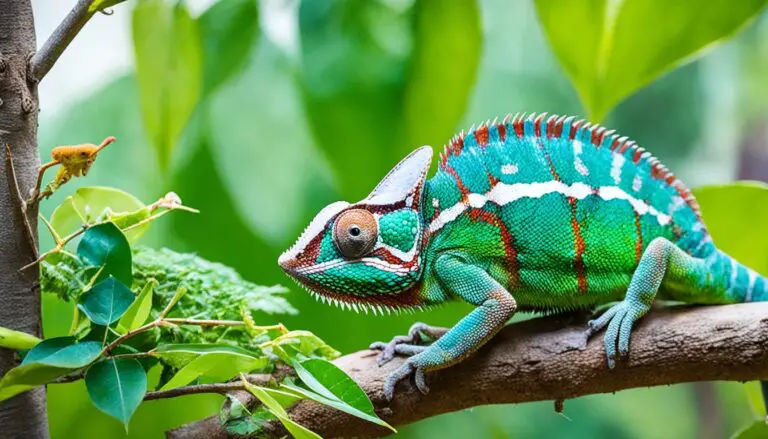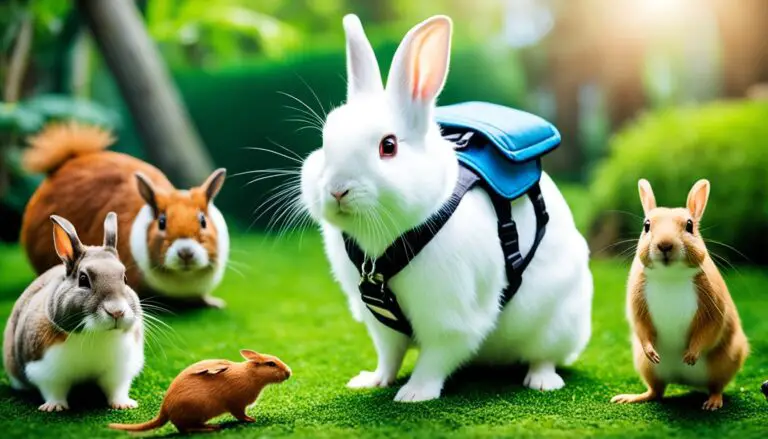How to Train Your Exotic Pet: A Comprehensive Guide
Exotic pets can be fascinating creatures to have in your home, but they can also be a challenge to train.
Whether you have a snake, a parrot, a hedgehog, or a sugar glider, training your exotic pet is essential for their well-being and your sanity.
In this article, we will discuss the basics of training exotic pets and give you tips on how to train your pet effectively.
Key takeaways:
- Exotic pets require specific training techniques that are tailored to their individual needs and characteristics.
- Potty training, leash training, and trick training are all essential parts of training your exotic pet.
- Positive reinforcement and clicker training are effective techniques for training exotic pets.
- Consistency, patience, and understanding your pet’s behavior patterns are key to successful training.
- Avoid common mistakes such as using punishment as a form of training and not being consistent in your training.
- Address behavior problems early on to prevent them from becoming more severe.
- Seek professional help if needed.
Introduction
Training an exotic pet is not an easy task, but it is essential if you want to have a happy and healthy pet.
Exotic pets have different needs and behavior patterns than traditional pets like dogs and cats, so it is essential to understand their unique characteristics to train them effectively.
In this article, we will guide you through the basics of training your exotic pet and provide you with some tips and techniques that will make the process easier and more enjoyable.
Why is training your exotic pet important?
Training your exotic pet is essential for several reasons.
- Firstly, it helps to establish a bond between you and your pet. It also helps to create a routine and structure for your pet, which can reduce stress and anxiety.
- Additionally, training your exotic pet can make them more manageable and easier to care for, reducing the risk of injury or damage to your home.
- Finally, training your exotic pet can also be a fun and rewarding experience for both you and your pet.
Understanding your exotic pet
The first step in training your exotic pet is to understand their unique behavior patterns and needs.
Exotic pets have different requirements than traditional pets, and it is essential to research their specific needs to provide them with the best care possible.
For example, snakes are solitary creatures that prefer a small, enclosed space, while parrots are social creatures that need a lot of interaction and mental stimulation.
The importance of consistency in training
Consistency is key when it comes to training your exotic pet.
You need to establish a routine and stick to it to avoid confusing your pet.
For example, if you are crate training your exotic pet, you need to be consistent in using the same command to indicate it is time to go into the crate.
Additionally, you should always reward your pet for good behavior and avoid punishing them for bad behavior, as this can be counterproductive.
Positive reinforcement training techniques
Positive reinforcement is one of the most effective training techniques for exotic pets.
This involves rewarding your pet for good behavior, such as using a clicker or giving them a treat when they follow a command.
Positive reinforcement is an excellent way to build trust and establish a bond between you and your pet.
Clicker training
Clicker training is a popular training technique that uses a clicker to reinforce positive behavior.
The clicker is a small device that makes a clicking sound when pressed, which is used to signal to your pet that they have done something right.
Clicker training is a great way to train your pet to do tricks or follow commands.
Crate training
Crate training is a popular training technique for exotic pets, particularly for those that need a lot of alone time.
Crate training involves introducing your pet to a crate and gradually increasing the amount of time they spend inside it.
This can help reduce stress and anxiety in your pet and make them feel comfortable doing this.
Potty training
Potty training your exotic pet is an essential part of their training.
The process involves teaching your pet where to go to the bathroom and how to signal to you when they need to go.
The key to potty training is consistency and patience. You should always take your pet to the same spot to go to the bathroom and reward them when they go to the right place.
Leash training
Leash training is another essential part of training your exotic pet, especially if you plan to take them outside.
The process involves getting your pet used to wearing a leash and collar and teaching them to follow you on a leash.
You should start by letting your pet get used to wearing the collar and then gradually introduce the leash.
Training your exotic pet to do tricks
Training your exotic pet to do tricks is a great way to bond with them and provide mental stimulation.
Some popular tricks for exotic pets include shaking hands, playing dead, and rolling over.
You can use positive reinforcement and clicker training to teach your pet these tricks.
Common mistakes to avoid when training your exotic pet
When training your exotic pet, there are some common mistakes that you should avoid.
These include using punishment as a form of training, not being consistent in your training, and not understanding your pet’s behavior patterns and needs.
It’s important to do your research and be patient with your pet to ensure they are trained effectively.
How to deal with behavior problems
Exotic pets can sometimes develop behavior problems, such as biting, chewing, or aggression.
It’s important to address these issues early on to prevent them from becoming more severe.
Some techniques for dealing with behavior problems include positive reinforcement, redirecting your pet’s behavior, and seeking professional help if needed.
What to Consider When Training Your Exotic Pet
Here are five really important factors to keep in mind to make the most of your exotic pet training sessions:
1. Understand Your Exotic Pet’s Behavior
Before you start training your exotic pet, it’s important to understand their behavior.
Exotic pets are not domesticated animals, so their behavior can be quite different from the pets we’re used to.
For example, parrots are highly social animals and require a lot of attention and interaction.
Snakes, on the other hand, are solitary animals and prefer to be left alone. Understanding your pet’s behavior will help you tailor your training methods to their needs.
2. Use Positive Reinforcement
Positive reinforcement is a powerful training tool for exotic pets. It involves rewarding your pet for good behavior and ignoring or redirecting bad behavior.
This approach can help your pet learn desired behaviors and strengthen your bond with them.
When using positive reinforcement, be sure to use treats or rewards that your pet enjoys.
For example, you can use a favorite toy or food treat to reward your pet for following commands or exhibiting good behavior.
3. Be Consistent
Consistency is key when training an exotic pet.
It’s important to establish clear boundaries and rules for your pet and stick to them. This will help your pet understand what behaviors are acceptable and what are not.
If you’re inconsistent with your training, your pet may become confused and exhibit unwanted behaviors.
Consistency will help your pet learn what’s expected of them and prevent confusion.
4. Start with Basic Commands
When training your exotic pet, it’s best to start with basic commands.
This can include commands like “sit,” “stay,” or “come.”
These commands are easy for your pet to understand and will help establish a foundation for more advanced training.
To teach your pet a basic command, use positive reinforcement and be consistent with your training.
You may need to repeat the command multiple times and reward your pet each time they follow the command.
5. Socialize Your Exotic Pet
Socializing your exotic pet is an important part of their training.
This involves exposing your pet to different people, animals, and environments. Socialization can help your pet become more comfortable and confident in different situations.
When socializing your exotic pet, be sure to use positive reinforcement and start slowly.
You don’t want to overwhelm your pet with too much stimuli at once. Gradually expose your pet to new experiences and reward them for positive behaviors.
Conclusion
Training your exotic pet can be a challenging but rewarding experience.
It’s important to understand your pet’s unique characteristics and needs and be consistent in your training.
Positive reinforcement and clicker training are effective techniques for training exotic pets, and potty training, leash training, and trick training are all essential parts of the process.
Remember to avoid common mistakes and address behavior problems early on for the best results.
FAQs
Can I train my exotic pet without professional help?
While professional help can be beneficial, it’s not always necessary.
With patience, consistency, and an understanding of your pet’s behavior, you can train your exotic pet on your own.
However, if you’re unsure about how to train your pet or are having difficulty with the training process, seeking professional help may be beneficial.
Can exotic pets be potty trained like traditional pets?
Yes, exotic pets can be potty trained using the same techniques as traditional pets, such as positive reinforcement and consistency.
Is clicker training effective for exotic pets?
Yes, clicker training is an effective training technique for exotic pets, particularly for teaching them tricks.
How long does it take to train an exotic pet?
The time it takes to train an exotic pet depends on the pet’s individual characteristics and the training technique used.
It’s important to be patient and consistent in your training.
What should I do if my exotic pet develops behavior problems?
If your exotic pet develops behavior problems, it’s important to address them early on.
Techniques like positive reinforcement and redirection can be effective, but you may need to seek professional help if the problem persists.
Can I train my exotic pet to walk on a leash?
Yes, you can train your exotic pet to walk on a leash using positive reinforcement and patience.
Don’t forget to start slowly and gradually increase the amount of time your pet spends on the leash.
Peter Stones is the founder of Exotic Pets Place, the leading online resource for exotic pet care information.
With over 10 years of hands-on exotic pet ownership experience, he is deeply passionate about sharing his expertise to help others properly care for their unusual pets.
When he's not writing extensively researched articles or connecting with fellow exotic pet enthusiasts worldwide, you can find Peter at home tending to his own beloved menagerie of exotic animals.




![How to Train Your Exotic Pet to Use a Litter Box [+ Practical Tips], a fluffy puppy in a box](https://exoticpetsplace.com/wp-content/uploads/2023/05/How-to-Train-Your-Exotic-Pet-to-Use-a-Litter-Box-Practical-Tips-a-fluffy-puppy-in-a-box-768x512.jpg)


